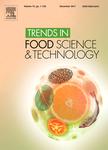版权所有:内蒙古大学图书馆 技术提供:维普资讯• 智图
内蒙古自治区呼和浩特市赛罕区大学西街235号 邮编: 010021

作者机构:Huazhong Agr Univ Coll Food Sci & Technol 1 Shizishan St Wuhan Hubei Peoples R China Dalian Polytech Univ Acad Food Interdisciplinary Sci Sch Food Sci & Technol Dalian 116034 Liaoning Peoples R China Huazhong Univ Sci & Technol Hubei Engn Res Ctr Biomat & Med Protect Mat Sch Chem & Chem Engn & Serv Failure Sch Chem & Chem EngnKey Lab Mat Chem Energy Conve 1037 Luoyu Rd Wuhan Peoples R China
出 版 物:《TRENDS IN FOOD SCIENCE & TECHNOLOGY》 (Trends Food Sci. Technol.)
年 卷 期:2025年第156卷
核心收录:
学科分类:0832[工学-食品科学与工程(可授工学、农学学位)] 08[工学]
基 金:National Natural Science Foundation of China Key R & D Program of Hubei Province [2022BBA0057] Open Project of Key Laboratory of Detection Technology of Focus Chemical Hazards in Animal-derived Food for State Market Regulation [KF-202201]
主 题:Electrochemical sensors Machine learning Food contaminants Food safety monitoring Real-time monitoring
摘 要:Background: Food safety is a critical global concern that directly impacts human health and well-being. Electrochemical sensors have garnered considerable interest for detecting contaminants in food due to their sensitivity and selectivity;however, issues such as sensor instability and electrode fouling limit their effectiveness. The integration of machine learning (ML) into electrochemical sensing offers a transformative approach, enhancing sensor performance, stability, and data processing capabilities while enabling real-time monitoring. Scope and approach: This review succinctly explores the use of ML-enhanced electrochemical sensors specifically for food safety applications. Initially, various ML algorithms applicable to electrochemical sensor technology for food safety monitoring are discussed. The review then highlights the application of ML-enhanced sensors in detecting food-related contaminants, such as pesticides, pharmaceutical residues, heavy metals, microorganisms, artificial dyes, and phenolic compounds. Finally, it addresses the challenges and future prospects in advancing electrochemical sensors for food safety, emphasizing the potential of appropriate ML algorithms to improve insitu food safety monitoring. Key findings and conclusions: The integration of ML with electrochemical sensors improves their sensitivity, selectivity, and stability, addressing issues like electrode fouling. ML algorithms such as support vector machines, artificial neural networks, and random forests effectively detect food contaminants like pesticides, heavy metals, and microorganisms. ML also enables real-time data processing for quick, accurate detection of trace-level contaminants. However, challenges remain in sensor calibration, data reliability, and the need for highquality training datasets. Future research should focus on enhancing sensor robustness, refining ML models for improved accuracy, and advancing the commercialization of ML-enhanced sensors for food safety m